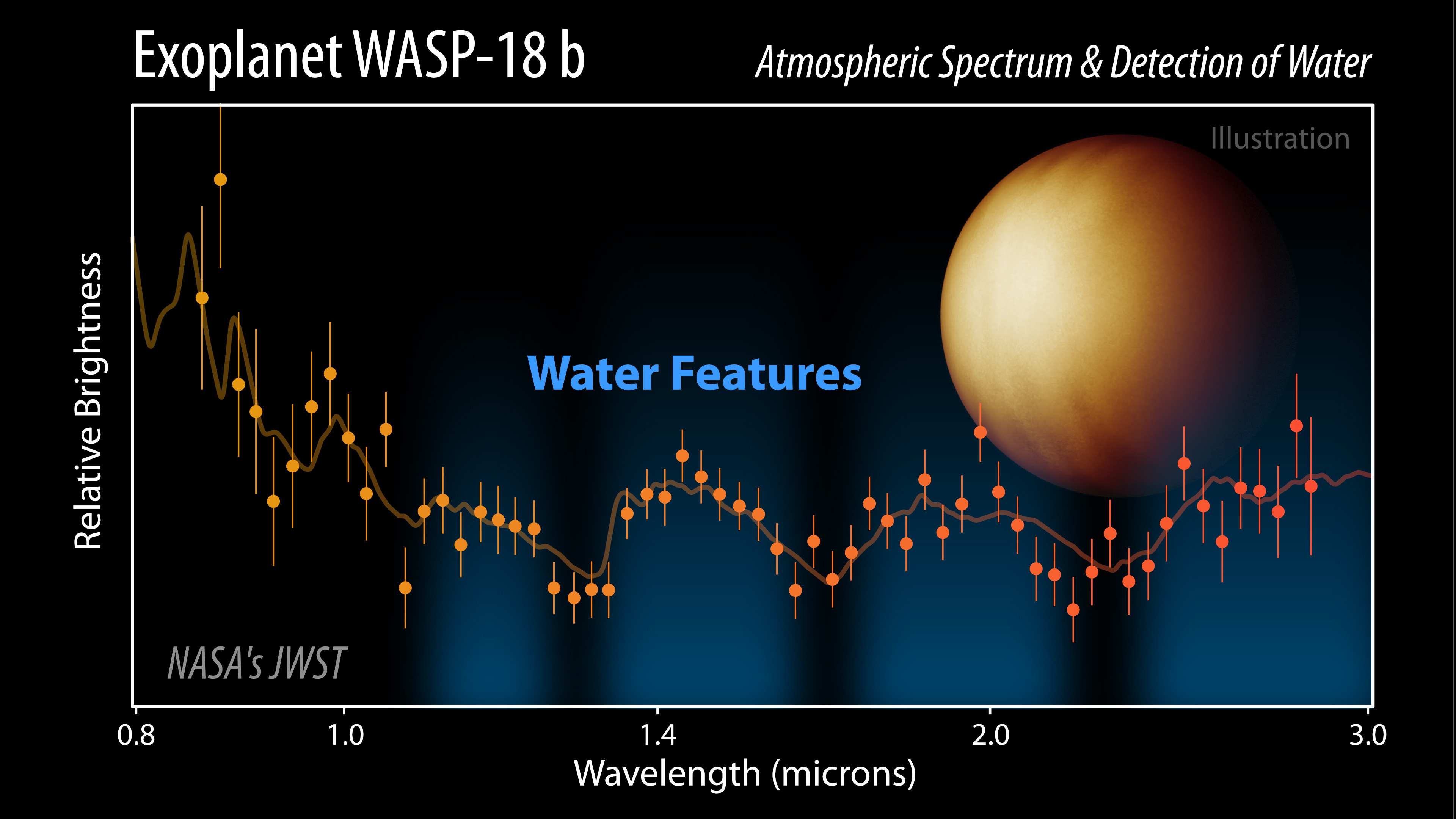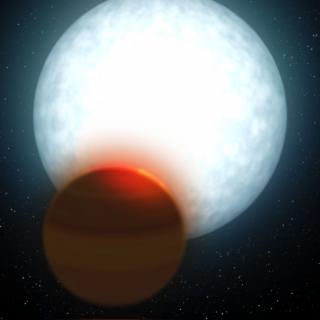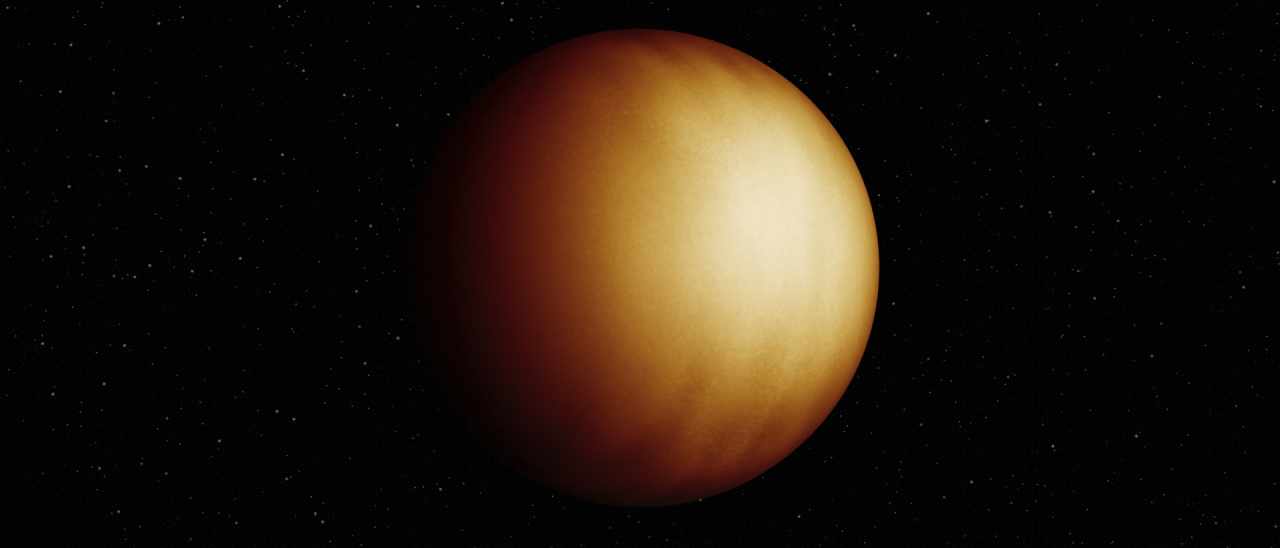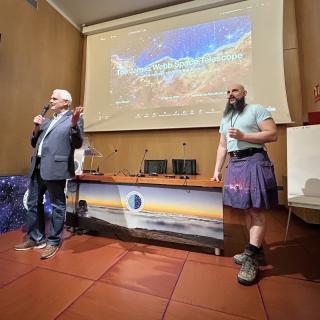Using observations from the James Webb Space Telescope (JWST), an international scientific team, in which the Instituto de Astrofísica de Canarias (IAC) participates, has identified water vapour in the atmosphere of WASP-18 b, a massive extrasolar planet, a so-called hot Jupiter, with a temperature of around 2.700 °C. The result is published in the journal Nature.
Exoplanet WASP-18 b is about 400 light-years from Earth, is 10 times more massive than Jupiter and has an orbital period of less than a day. Its extreme proximity to its star, its relative closeness to Earth, and its large mass have made it an intriguing target for scientists since its discovery in 2009. Now, observations with JWST have produced the most detailed map of a hot giant planet to date.
For the study of WASP-18 b, the team mapped its temperature, or brightness, by detecting the secondary eclipse, that is, the moment when the planet slips behind its star and reappears, and studied the thermal differences across the diurnal hemisphere of the planet, the side that always faces the star.
The JWST mapping shows a huge change in temperature – up to 1.000 degrees – from the hottest point facing the star to the so-called terminator, or transition line between the illuminated and shadowed parts of the planet, which are in permanent twilight.
Given how much cooler the planet is at the terminator, the scientific team suspects that a strong magnetic field is preventing the winds from effectively redistributing the heat to the night side. Thus, the winds would be blowing from the planet's equator towards the north and south poles, rather than from east to west as would be expected.
The subtle (and precise) signature of water
The study, which also recorded different temperature changes at different elevations of the gas giant planet’s layers of atmosphere, measured water features at various elevations in its spectrum, even though temperatures are almost 2.700 °C and such extreme heat would tear most of the water molecules apart. The ability to detect such a small amount of these molecules speaks to JWST's extraordinary sensitivity.

"‘It was a great feeling to look at WASP-18 b’s JWST spectrum for the first time and see the subtle but precisely measured signature of water," says Louis-Philippe Coulombe, a graduate student at the University of Montreal and lead author of the paper. ‘‘Using such measurements, we will be able to detect such molecules for a wide range of planets in the years to come!."
In the words of Enric Pallé, researcher at the IAC and co-author of the study:‘‘By analyzing WASP-18b’s spectrum, we not only learn about the various molecules that can be found in its atmosphere but also about the way it formed. We find from our observations that WASP-18 b’s composition is very similar to that of its star, meaning it most likely formed from the leftover gas that was present just after the star was born."
Article: Louis-Philippe Coulombe et al: “A Broadband Thermal Emission Spectrum of the Ultra-hot Jupiter WASP-18b”, Nature, 2023. DOI: https://doi.org/10.1038/s41586-023-06230-1
Contact at the IAC:
Enric Pallé, epalle [at] iac.es (epalle[at]iac[dot]es)





